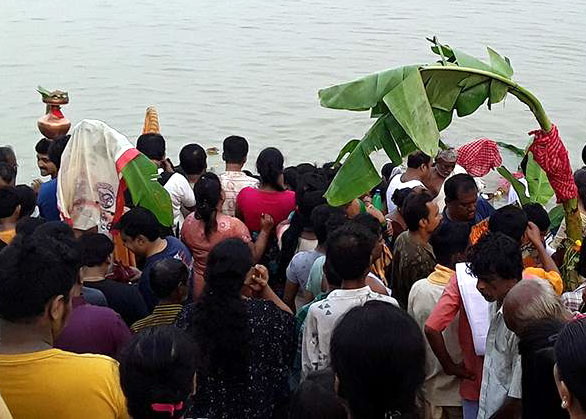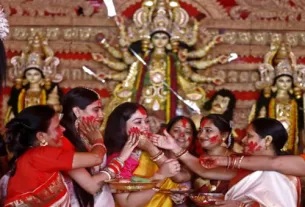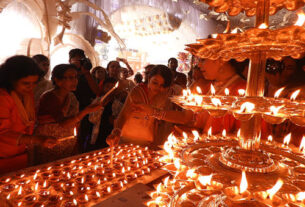Banana Bride (Kola Bou)
One of the first rituals of Durga Puja is the Kola-Bou Snan on Saptami morning. The day starts with the ritual where a banana plantain with eight other plants is tied with yellow threads and the twigs of the Aparajita plant. It is then bathed and draped in the Laal par shada saree (traditional red and white saree). The leaves are smeared with vermillion while various offerings are made. Then, the Kola Bou is placed on Lord Ganesha’s right.
The nine plants or Nabapatrika signify the nine forms of Maa Durga – Goddess Brahmani (Banana), Goddess Kalika (Colacassia), Devi Durga (Turmeric), Goddess Kartiki (Jayanti), Goddess Shiva (Wood apple), Devi Raktadantika (Pomegranate), Devi Sokrahita (Ashoka tree), Devi Chamunda (Arum plant) and Goddess Lakshmi (Rice plant).
Another symbolic meaning of worshipping Kola Bou is her implied representation of Naba Patrika that together form a sacred complex on Durga Puja. According to followers of this ritual, priests who perform the ceremony tie a bunch of eight plants on the trunk of the banana tree and the grouping of all nine plants constitute the Kola Bou – form of Durga herself, which symbolises all the aspects of nature in a complex vegetative state.
As idol worship was not common in the early ages, people worshipped Mother Nature. It was during the Autumn (sharat ritu), the time for reaping crops, agriculturists worshipped Nabapatrika Goddess for good harvest. Later when Durga Puja became a popular festival of masses, these rituals were added to the ceremonies of Durga Puja.





